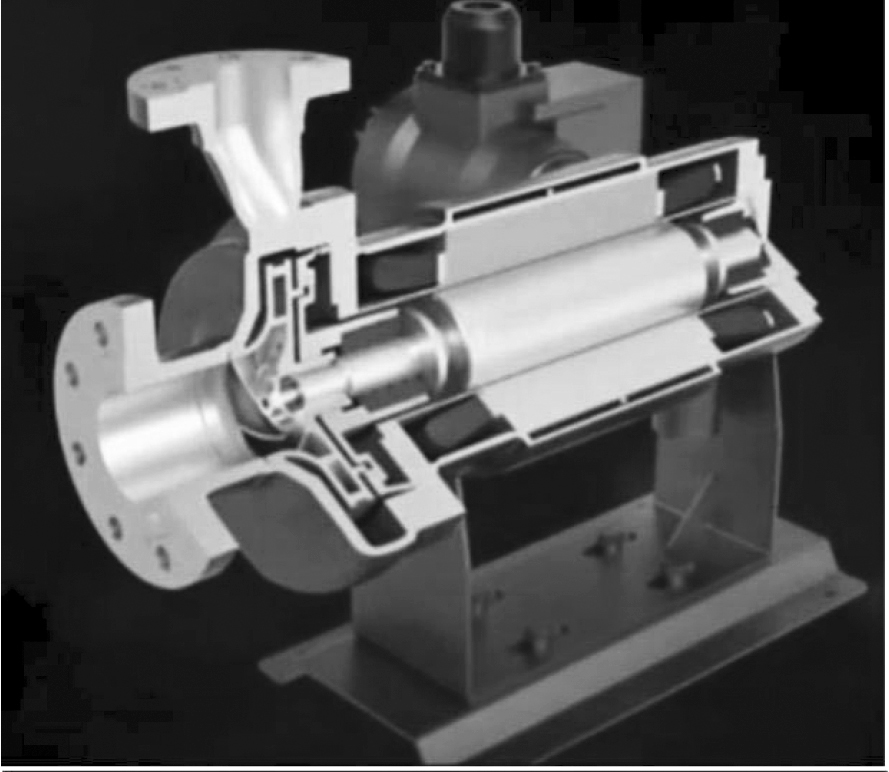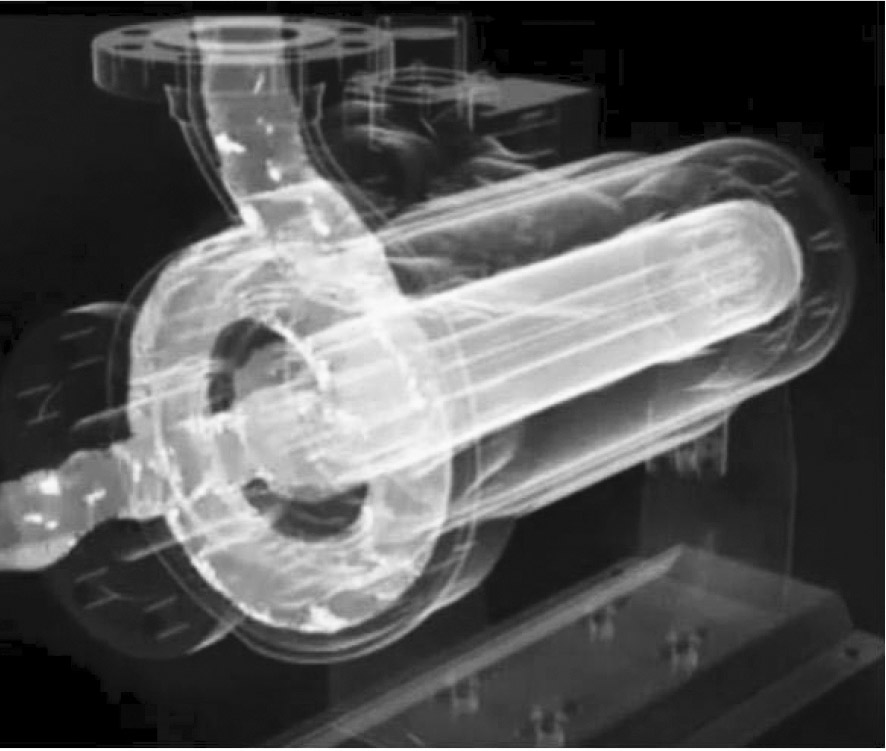Abstract
Pumps play an important role in the industry. Efficient and optimal operation of pumps can address the problems of any leakages, emissions and also ensure energy efficiency, making them more eco-efficient. Several examples have been stated in this article to achieve that and how the right kind of pump can help reduce environmental problems.
The relation between ecology and pumps is two-fold:
(1) Pumps are an important equipment in eco-management systems, such as effluent treatment, disposal systems, sewerage and drainage systems and ash-handling systems.
(2) Operation and performance of pumps should be eco-friendly, such that
(2-1) The carbon footprint of energy consumed by pumps should be as small as possible.
(2-2) The leakages and emissions in pumps should not be offensive to ecology.
Whereas pumps mentioned in (1) refer to pumps in eco-management systems, the concerns mentioned in (2-1) and (2-2) apply to all pumps, including pumps in eco-management systems.
One interesting example is of pumps in ammonia plants. Ammonia has multifarious uses. It is a refrigerant and a fertilizer-base. Since atmospheric air contains 79% nitrogen, it becomes an important source for producing Ammonia (NH3). The hydrogen component is obtained from natural gas, which is obtained during oil-exploration. This also means that ammonia plants suck huge amounts of air from the atmosphere and obtaining natural gas is sucking mother earth of its gas deposits! The chemical reaction of mixing nitrogen and hydrogen to produce ammonia is an exothermic process and that disturbs the temperature balance of the environment in and around ammonia plants. Since ammonia is hazardous, any leakage of ammonia from the ammonia plants is ecologically very offensive. Rather, almost every single aspect of production of ammonia seems to be ecologically offensive ! Every commoner world over is blissfully unaware of this !


I came to think of all this, only because construction of pumps for pumping liquid ammonia is a special construction. Most popular pumps for pumping liquid ammonia are Canned Motor Pumps. As is clear from the name, in these pumps, the motor and the pump becomes an integral unit. Actually, more than the pump, the motor is special, because it is canned motor. In the motor, what is canned is both the stator and the rotor is canned. A typical cross section of a canned motor pump is shown in Fig. 1.
There are many interesting features to be observed here. As shown in Fig. 2 a canned motor runs filled with the liquid being pumped. That in fact is the main reason, why the stator and the rotor are canned. Because the liquid flows across the motor also, it has no chance of leaking into the atmosphere. This makes a canned motor pump, a zero-leakage pump. As mentioned earlier, since ammonia is hazardous, pumps pumping liquid ammonia must be zero-leakage pumps.
Whereas one would like to compliment the ingenuity of the people who first designed and made a canned motor pump, one should also note that all technologies have compromises inherent. A canned motor pump is no exception.
Efficiency of an electric motor is directly related to the efficiency of the magnetic coupling between the stator and the rotor. The efficiency of the magnetic coupling is related to the gap or clearance between the stator and the rotor. The simple fact that the stator and the rotor in a canned motor pump have to be canned, means that the effective separation between the stator and the rotor will be larger in a canned motor than the clearance in a commonplace motor of equal rating. On the whole, one would have to accept that overall efficiency of a canned motor pump would be less.
The efficiency of any pump in any system directly affects its carbon footprint. For operation and performance of a pump to be eco-friendly, the onus rests with every stakeholder, the system-designer, the pump-designer, the pump-user and the pump-manufacturer. It would be interesting to take note of four statements.
1. An overrated driver is as much of a culprit as is an overrated pump.
2. A pump running trouble-free for a long time can be a case of an overrated driver.
a. In an example case, suppose a pump was running trouble-free for 25 years. When reviewing, it transpired that the driver was of 22 kW rating, whereas 3.7 kW was more than adequate. There was regular data-logging of the pump’s performance, but nobody noticed that the current drawn was almost and the equal to the no-load current of the 22 kW motor, part-load efficiency of any motor is very poor. That means that the pump was running with a very poor overall efficiency.
3. A system running trouble-free for a long time can also be a case of overrated pump.
a. In a coolant circulation system, temperature-rise of the coolant even after heat-exchange being insignificant can mean that flow-rate of the pump is excessive.
b. For another example case, if the rating of the boiler is 100 TPH at 110 bar, the BF pump having rating of 165 m3/hr at 170 bar with a 1200 kW (1.2 MW) driver is obviously excessive. Allowing for even 20% margin over boiler rating, for both flow-rate and pressure, the rating for the pump would work out to 120 m3/hr and 132 bar. At 75% pump-efficiency the driver-rating would work out to 575.2 kW, say 600 kW – half of 1200 kW (!) Note that the figures quoted in this example are not hypothetical. They were quoted to me by people operating their plants with quoted ratings of the boiler and of the BF pumps.
4. A pump running troublesome can often be a case of mismatch between the pump and the system i.e. of wrong selection, of wrong installation, of wrong operation or of improper maintenance.
a. In an example case, a plant engineer was replacing the impeller of a pump every three months. Failure analysis revealed that the pump, especially the impeller was suffering cavitation damage. Another pump in the same system did not suffer such damage. The pump suffering damage was a high-rpm, high specific speed pump and its required NPSH was high. The pump which was not suffering damage was a low-rpm, low specific speed pump and its required NPSH was low. Actually the system worked with flooded suction. That again is a great misconception, that for a flooded suction system, one need not check NPSH available in the system and NPSH required by the pump.
b. The above case is not only of wrong selection, but also of wrong maintenance. The plant engineer had kept on replacing impellers, because Root Cause Failure Analysis had not been done. Maintenance engineers, even plant managers are often so much obsessed with the responsibility of keeping the plant running with minimum downtime, that replacing the impellers is an insignificant cost. This causes everybody being oblivious to the fact that manufacture of every unwarranted impeller happens only after avoidable consumption of energy, right from mining the ore for the raw material of the impeller, its casting in the foundry, its machining and finally to its transportation to the user, all this apart from starting and stopping the pump, for replacing the impeller. It is an engineering fact that starting current of a motor is about seven times its full-load current.

c. This point of starting current of a motor being about seven times its full-load current brings to mind the growing tendency to provide pumping systems in high-rise buildings as hydro-pneumatic pressure booster systems (See Fig. 3). The systems are designed to ensure water-supply at the farthest tap on the topmost floor. Inherently, it is a high-head system. Most high-head systems are likely to be less energy-efficient. Also, every release of pressure in the hydro-pneumatic reservoir causes the pumps to start and stop, maybe, 15-20 times per hour. That means the system draws the high starting current that many times. Since normal design of motors is for 4-5 starts and stops per hour, motors for pumps in hydro-pneumatic systems are special motors. People residing in high-rise buildings are not knowledgeable of all this. In the instance of failure of any motor, replacing the motor with a commonplace motor is hazardous, because the replacing motor may fail almost immediately.
d. Traditional pumping system in buildings has been raising water to the overhead reservoir. That concept continued to be followed even for high-rise buildings. So, water required for people staying at lower floors is also raised to the Overhead reservoir. This again is not energy-efficient. A simple analysis and option (See Fig. 4) suggests that energy-consumption can be reduced by almost 33%.
Of course energy-efficient pumping is an important aspect of eco-friendly pumping, but change in lifestyle especially in urban India is not helping ecology either. People buy the same things in malls, which they did in shops and markets. The difference is that a mall means an air-conditioned marketplace. A large volume of air-space being air-conditioned means as much larger energy-consumption and that much more offensive to ecology.
The various examples of pumping systems covering a wide cross section of users brings forth that almost every other pumping system across the world has the potential to reduce the energy-consumption.
Similar observation is noted in the following report at http://ietd.iipnetwork.org/content/pump-systems:
“… Pump systems are major energy users and responsible of around 20% of electricity use in industry. The use of pumps is highest in the petrochemical, the pulp and paper and the chemicals industry, although pump systems are to be found in most industries. Studies indicate that pumping efficiency in manufacturing plants can be less than 40%. Oversized pumps and the use of throttled valves were identified as the two major contributors to the loss of efficiency. Energy savings in pumping systems of between 30% and 50% could be realised through equipment or control system changes. With a through assessment of the entire system and implementation of other measures, additional savings can be realized. Similar to other motor driven systems, best results in efficiency improvement are achieved by adopting a systems approach in designing, installing, operating, and maintaining the pump systems.…”
Conclusion
A conscientious and intelligent pumping system is one of the methods to ensure a better environment for the future generation to live and breathe in.

































